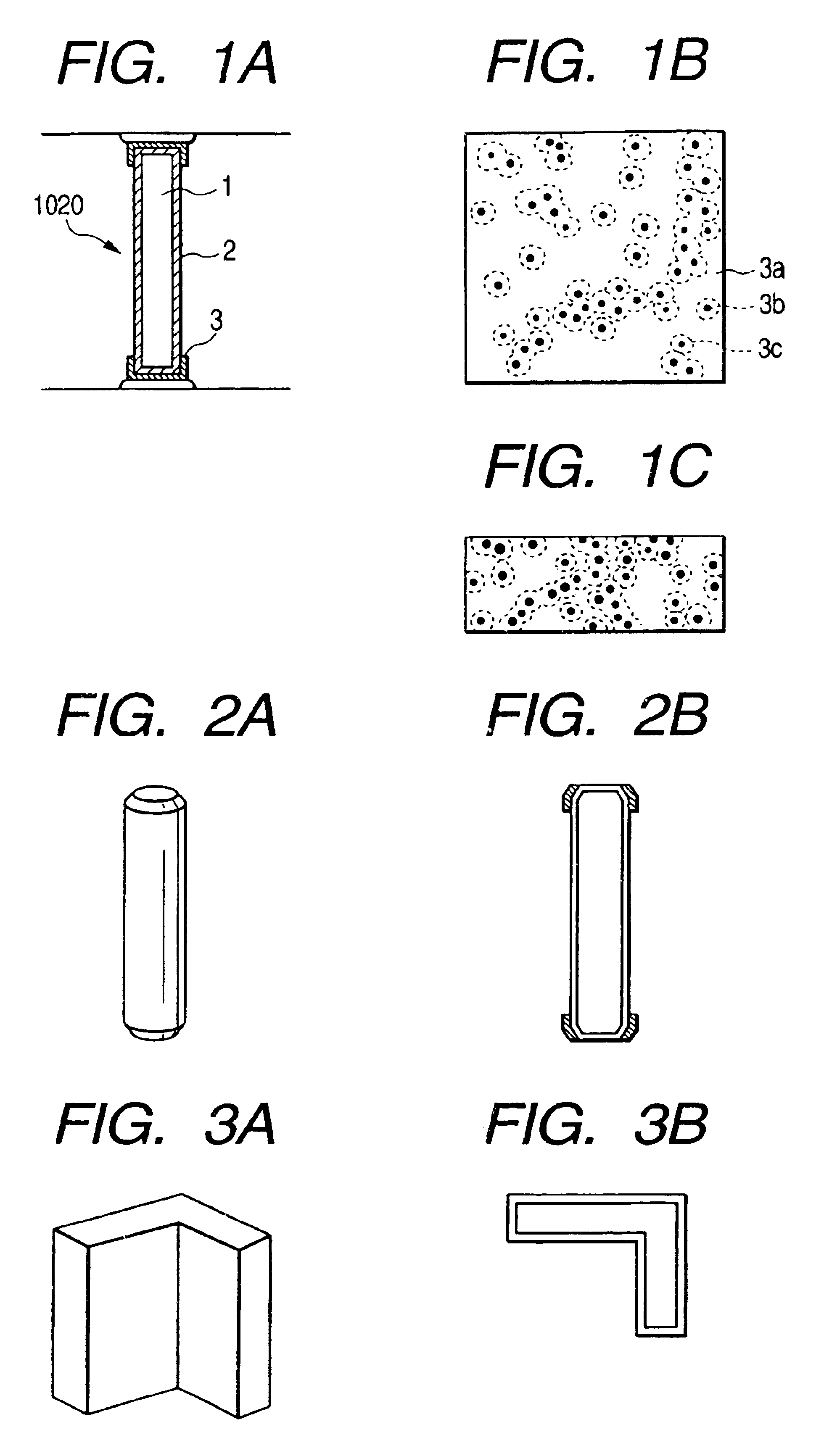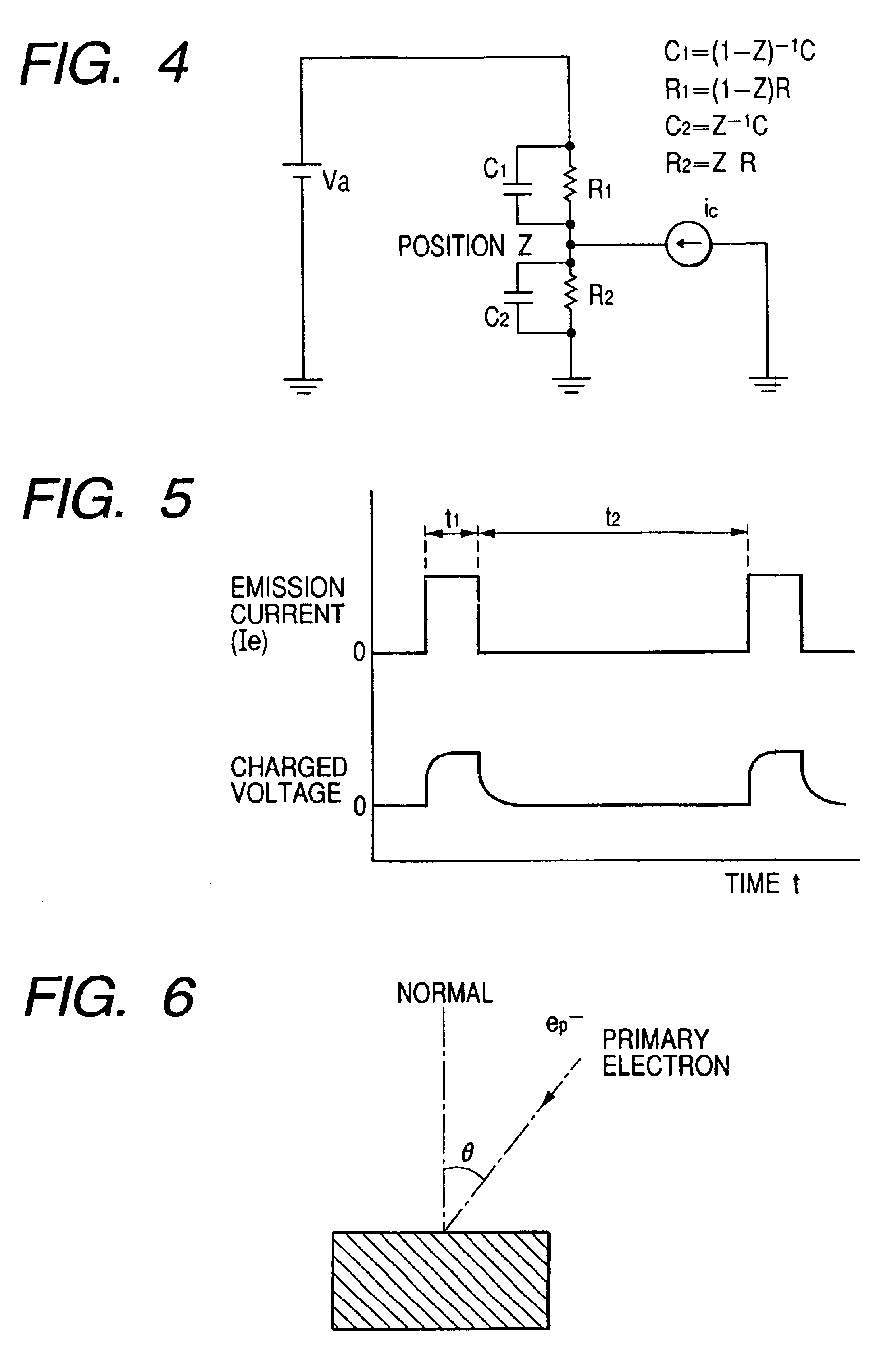Electron beam apparatus and spacer for reducing electrostatic charge
a technology of electrostatic charge and electron beam, which is applied in the field of electron beam apparatus and image producer to achieve the effect of reducing the surface
- Summary
- Abstract
- Description
- Claims
- Application Information
AI Technical Summary
Benefits of technology
Problems solved by technology
Method used
Image
Examples
example 1
Alumina Substrate, Board-shaped, Ruthenium Oxide Paste
[0306]The spacer used in this example was produced as described below.
[0307]As an original, used was a ceramic substrate produced with ratio of zirconia and alumina as 65:35, to have the same thermal expansion coefficient as a soda-lime glass substrate which was the same material of the rear plate. The original was subjected to polishing so that its outside dimensions of thickness, height and length would be 0.2 mm, 3 mm, and 40 mm, respectively. The average roughness of the substrate surface thus formed was 300 Å. Hereinafter the substrate is referred to as a0.
[0308]Prior to deposition processing, the above spacer substrate a0 was subjected to first ultrasonic cleaning in deionized water, IPA and acetone for 3 minutes, then drying at 80° C. for 30 minutes, and followed by UV ozone cleaning so as to remove organic residues on the surface of the substrate.
[0309]Then the surface was coated with 1108 resistive paste from DuPont by p...
example 2
Low-alkali Substrate, Board-shaped, Ruthenium Oxide
[0324]As an original, used was a low-alkali glass substrate, which was subjected to injection molding and mirror surface polishing so that its outside dimensions of thickness, height and length would be 0.2 mm, 3 mm, and 40 mm, respectively. The average roughness of the substrate surface thus formed was 100 Å. Hereinafter the substrate is referred to as g0. Prior to deposition processing, the above spacer substrate g0 was subjected to first ultrasonic cleaning in deionized water, IPA and acetone for 3 minutes, then drying at 80° C. for 30 minutes, and followed by UV ozone cleaning so as to remove organic residues on the surface of the substrate.
[0325]Then the surface was coated with a highly resistive film and a low resistive film was partly formed thereon in the same manner as Example 1, except that the above glass substrate g0 was used as a spacer substrate and that the upper limit of heating temperature was set for 600° C. almost...
PUM
 Login to View More
Login to View More Abstract
Description
Claims
Application Information
 Login to View More
Login to View More - R&D
- Intellectual Property
- Life Sciences
- Materials
- Tech Scout
- Unparalleled Data Quality
- Higher Quality Content
- 60% Fewer Hallucinations
Browse by: Latest US Patents, China's latest patents, Technical Efficacy Thesaurus, Application Domain, Technology Topic, Popular Technical Reports.
© 2025 PatSnap. All rights reserved.Legal|Privacy policy|Modern Slavery Act Transparency Statement|Sitemap|About US| Contact US: help@patsnap.com



